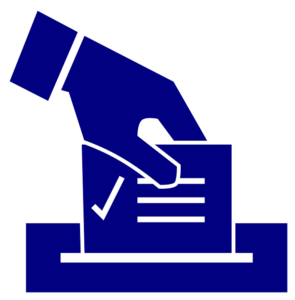 This week my French 4 and French 5 students will begin a short unit on the presidential elections in France. Because my own knowledge about the French electoral system was woefully meager, I have learned a lot while planning these lessons. Fortunately there are a lot of great, comprehensible resources for this theme. In fact, I had to really rein myself in or this unit may have gone on much longer than I suspect my students’ interest levels would sustain. Here’s an agenda (Updated 6/9/18) with links to the resources I’ve curated and created for this short unit.
This week my French 4 and French 5 students will begin a short unit on the presidential elections in France. Because my own knowledge about the French electoral system was woefully meager, I have learned a lot while planning these lessons. Fortunately there are a lot of great, comprehensible resources for this theme. In fact, I had to really rein myself in or this unit may have gone on much longer than I suspect my students’ interest levels would sustain. Here’s an agenda (Updated 6/9/18) with links to the resources I’ve curated and created for this short unit.
In Lesson 1 the students will watch a video about the American presidential electoral system to activate their background knowledge and another video about the French system. They will also read a short article about the French system and use the information from these three sources to complete a graphic organizer. I will then have them discuss their graphic organizers with a partner with the intention that this discussion might provide additional details for each partner.
In Lesson 2, the students will watch a video about the left and right political parties and complete a comprehension guide. The students will then be given either an article on one of two political candidates and will fill in half of a graphic organizer with information about this candidate. Their partner will simultaneous read an article about the other candidate, filling in the opposite half of the graphic organizer. The dyads will then discuss the information in their graphic organizers so that each member of the pair ends up with a complete organizer.
In Lesson 3, one member of each pair will watch a video about le Front National and the other will read an article about this same political party. Each student will fill out a comprehension guide. They will then discuss what they learned and complete a graphic organizer comparing the information from the two sources.
In Lessons 4 and 5, the students will watch a Simpsons video about the presidential candidates, and then read about several candidates and complete a graphic organizer. Next, they will complete an online questionnaire which will provide them with the name of the candidate whose platform most closely aligns with their own opinions and values. They will then complete additional research on this candidate in order to fill in a graphic organizer.
In Lesson 6, the students will use what they’ve learned about their candidate to write a speech intended to persuade young French people to vote for him/her.
In Lesson 7, the students will prepare a Google Presentation of photographs/captions that will support their performance of the speech they have prepared.
In Lesson 8, the students will present their speeches.
Although I haven’t prepared units for past presidential elections in France for fear that the topic would not be engaging to my students, I think the current political climate has led to young people being much more politically interested than students were in years past. I’m hoping that they learn as much from this mini-unit as I did by creating it!
